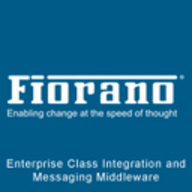

Fiorano ESB and Red Hat Fuse are products competing in the enterprise service bus category. Fiorano appears to have an advantage with pricing and support satisfaction, while Red Hat Fuse is favored for its extensive features and value, appealing to enterprises seeking comprehensive service capabilities.
Features: Fiorano ESB is noted for robust integration capabilities, seamless process orchestration, and being effective for real-time applications. It promotes efficient system connections and data processing. Red Hat Fuse offers a flexible architecture, support for hybrid cloud environments, and excellent scalability, leveraging its connection with Apache Camel for seamless routing. The platform also facilitates integration through various open-source components, enhancing its adaptability for diverse systems.
Room for Improvement: Fiorano ESB could enhance its cloud-native capabilities and broaden its integration with modern development methodologies. Additionally, expanding its out-of-the-box connectors would increase its competitive edge. Red Hat Fuse could benefit from more intuitive user interfaces and simplified deployment processes for less technical users. Further improvements could be made in support services to provide swifter response times, and refining documentation could facilitate easier troubleshooting and learning curves for new adopters.
Ease of Deployment and Customer Service: Red Hat Fuse is recognized for its streamlined deployment in containerized environments, bolstered by comprehensive documentation that aids swift implementation. Fiorano provides a straightforward setup, enhanced by personalized support, which boosts customer satisfaction. While Red Hat Fuse offers a broader ecosystem, Fiorano's focus on ease and direct assistance caters well to smaller teams with less complex needs.
Pricing and ROI: Fiorano ESB often comes with a lower initial setup cost, delivering satisfactory ROI by being cost-effective. Companies seeking affordable solutions find value in its offerings. Red Hat Fuse, although generally more costly, provides higher ROI through its enriched features and scalability, making it a preferred choice for enterprises looking for a long-term investment with broad capabilities.

Red Hat JBoss Fuse is a lightweight, flexible integration platform that enables rapid integration across the extended enterprise - on-premise or in the cloud. JBoss Fuse includes modular integration capabilities, an enterprise service bus (ESB), to unlock information.
We monitor all Enterprise Service Bus (ESB) reviews to prevent fraudulent reviews and keep review quality high. We do not post reviews by company employees or direct competitors. We validate each review for authenticity via cross-reference with LinkedIn, and personal follow-up with the reviewer when necessary.